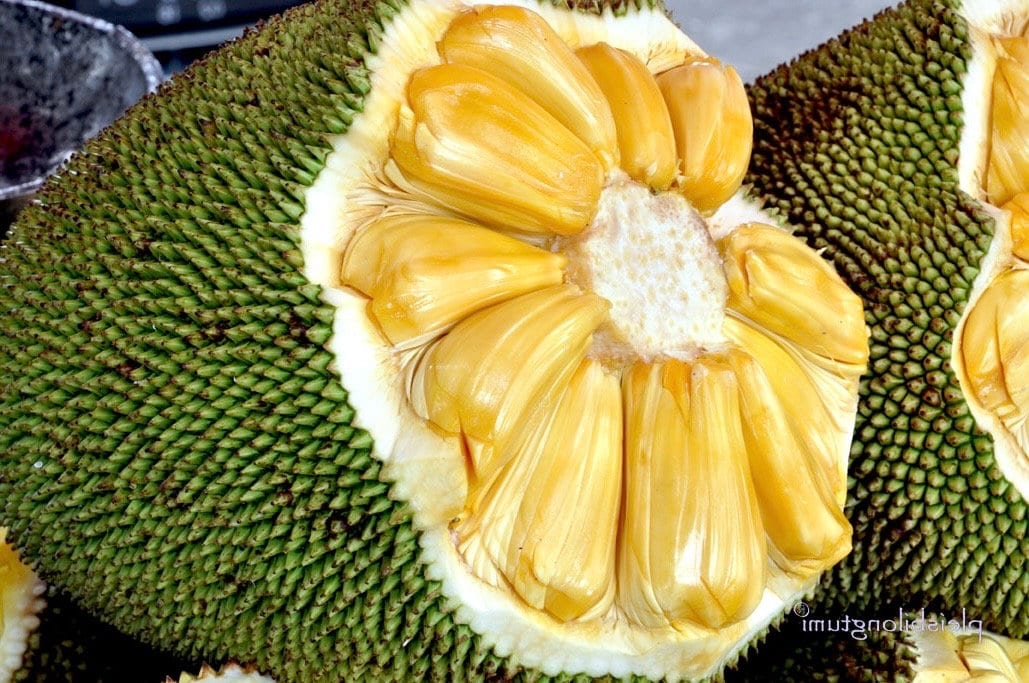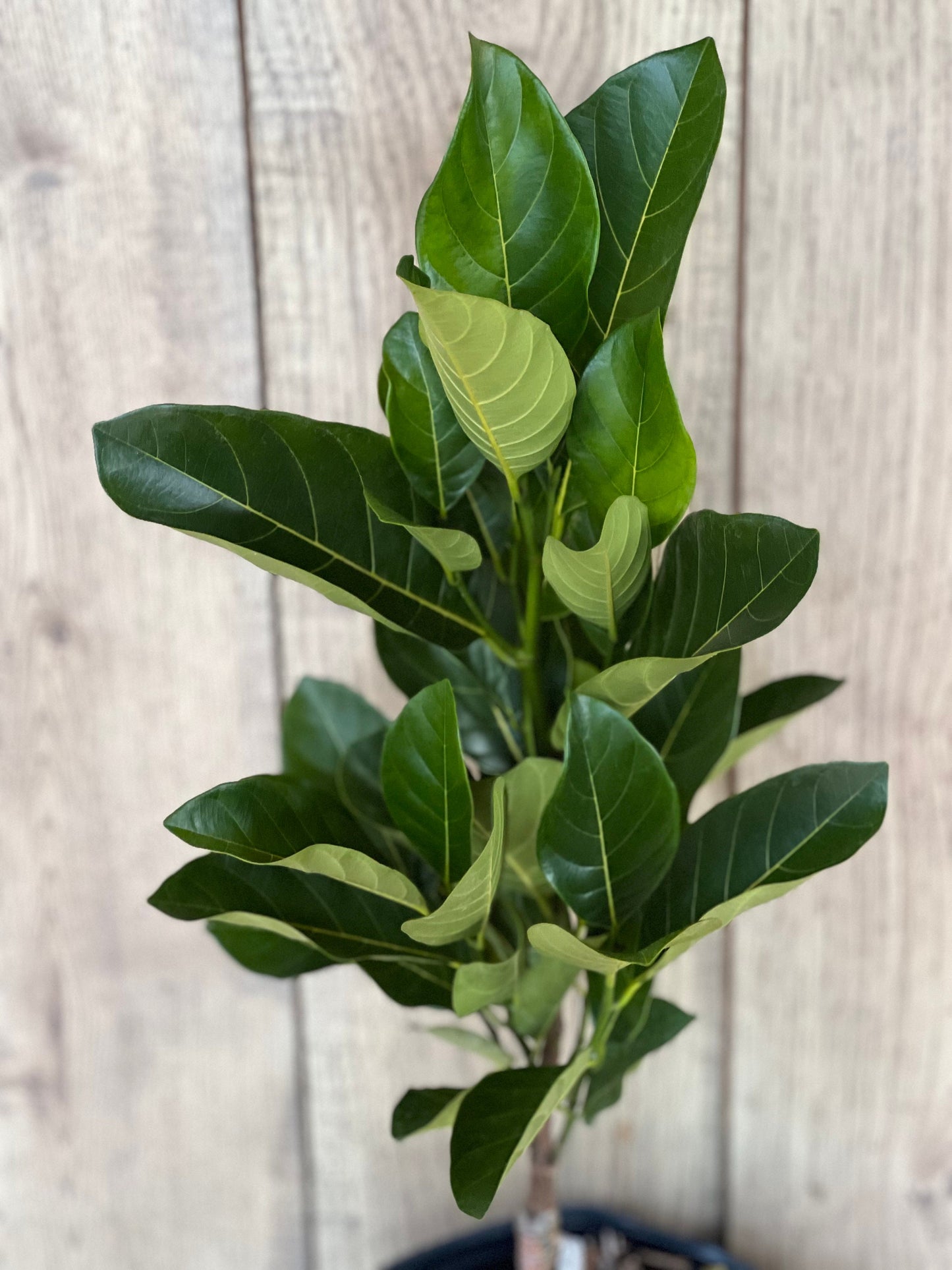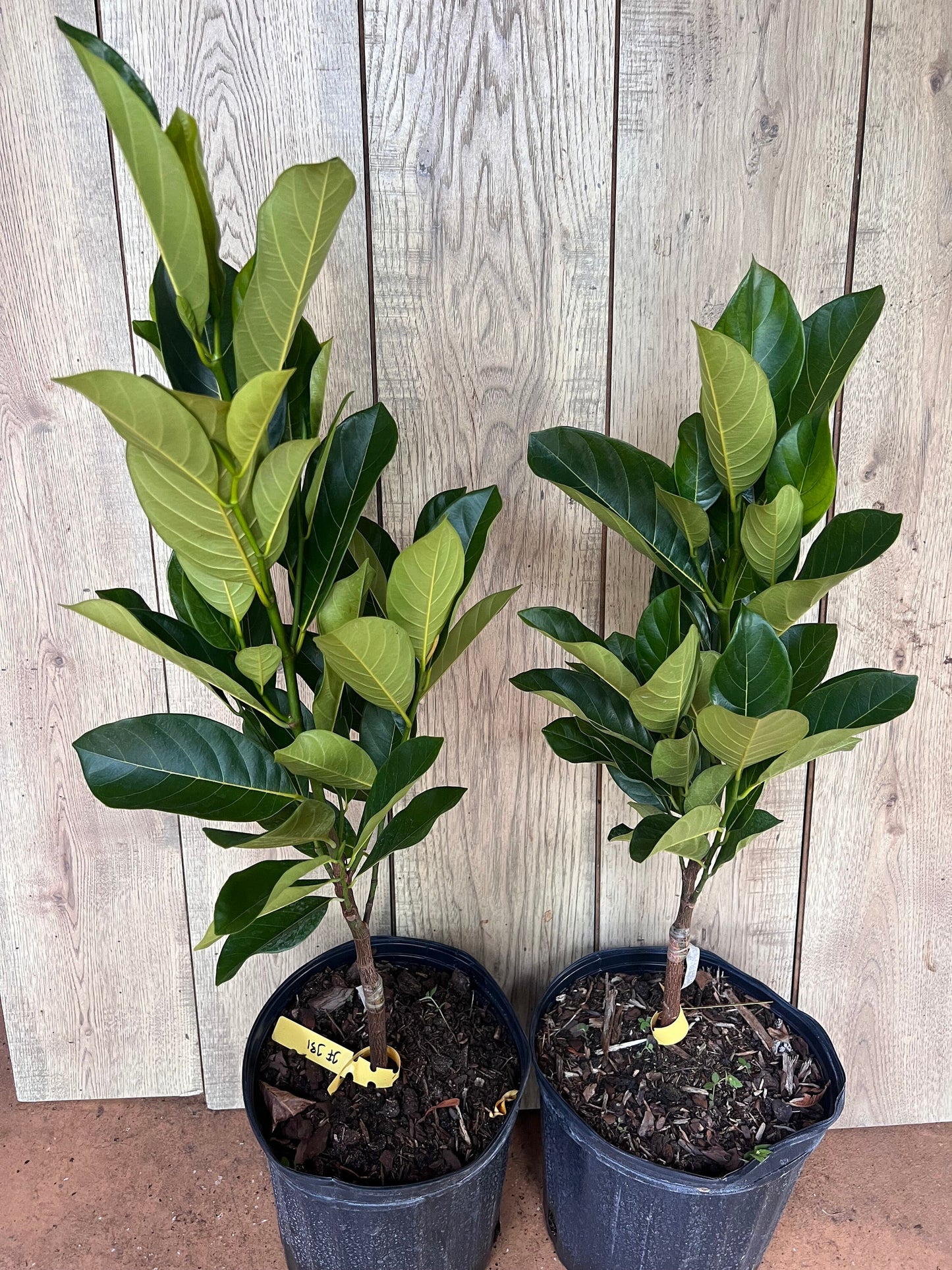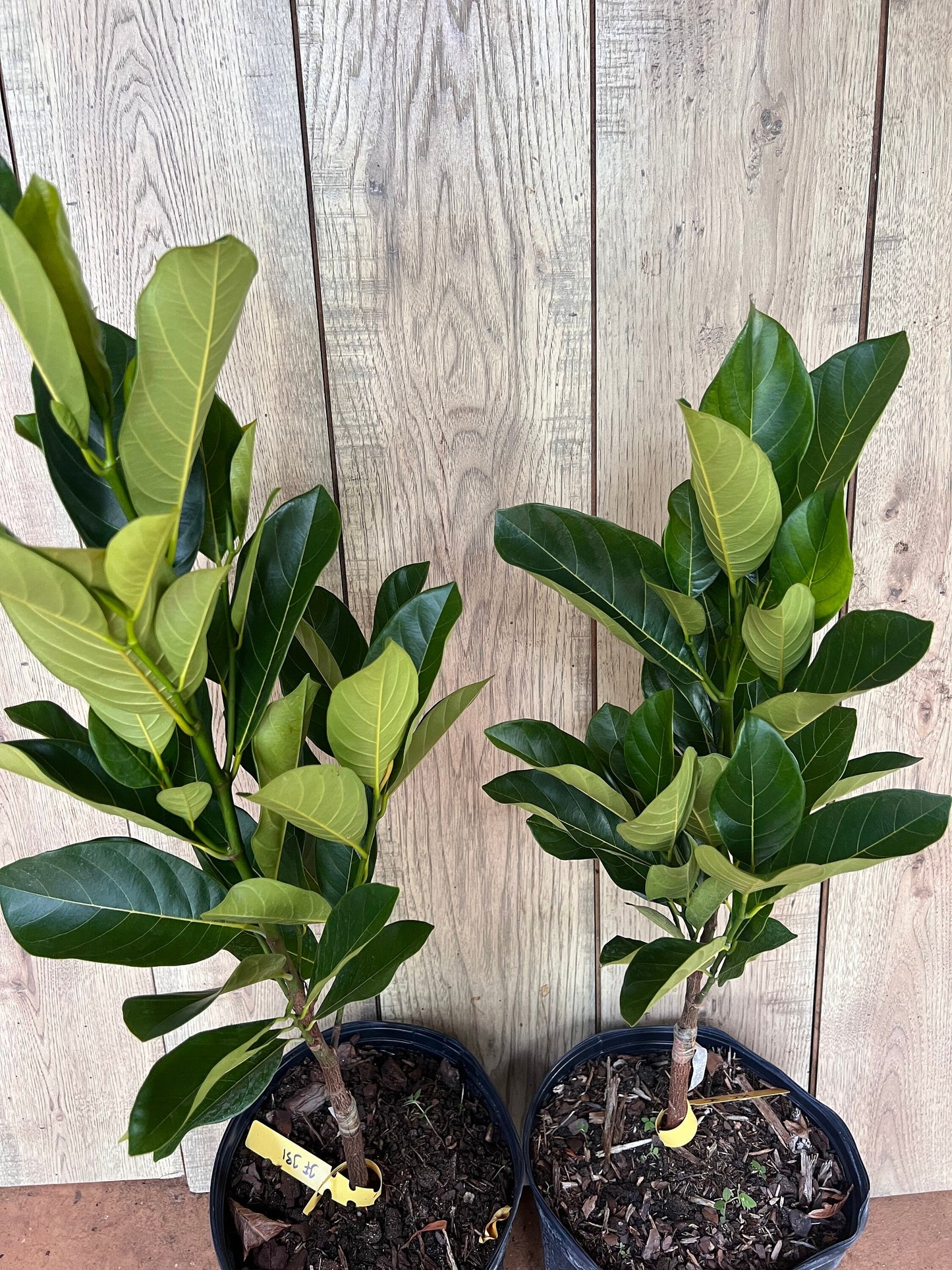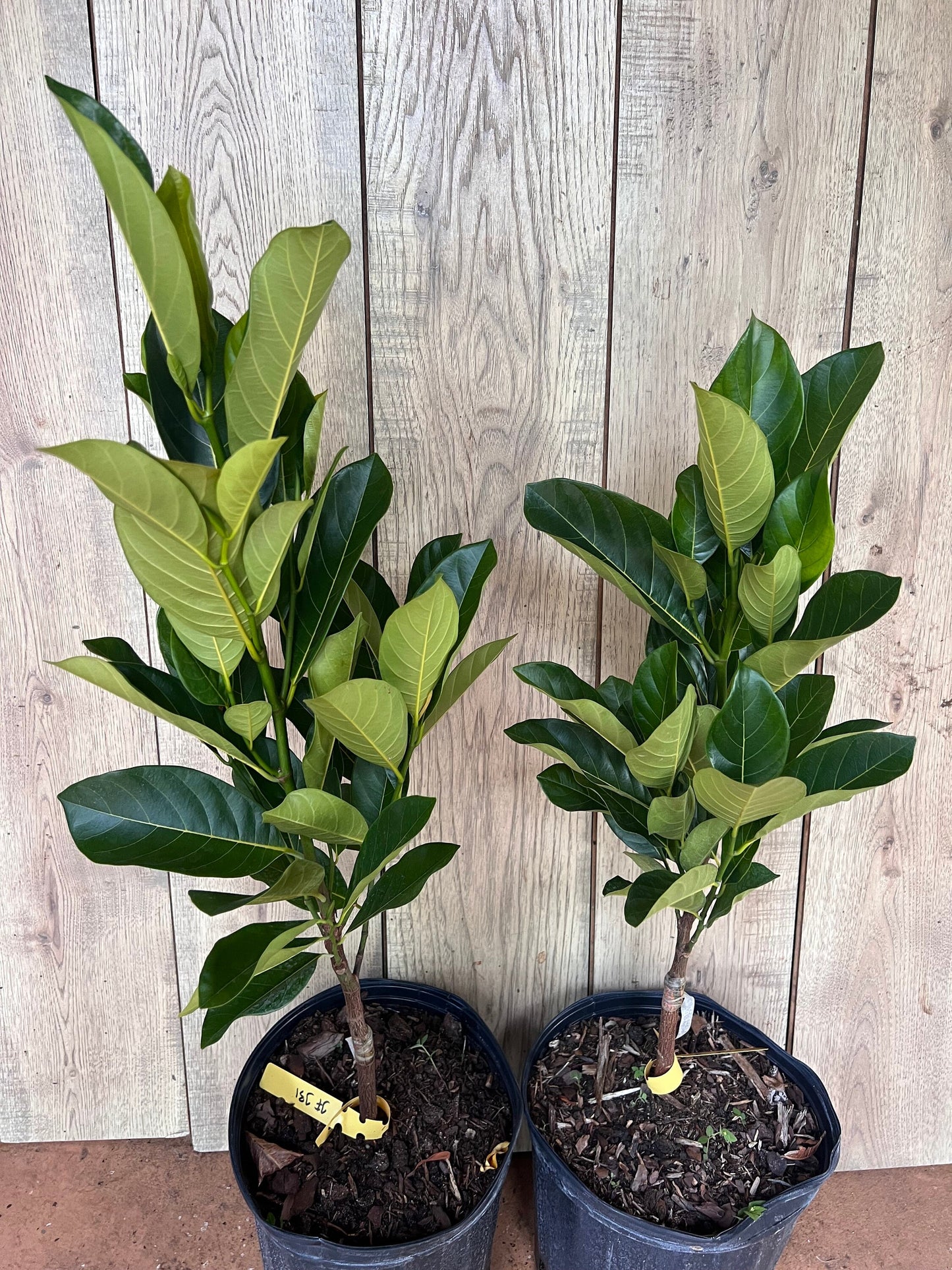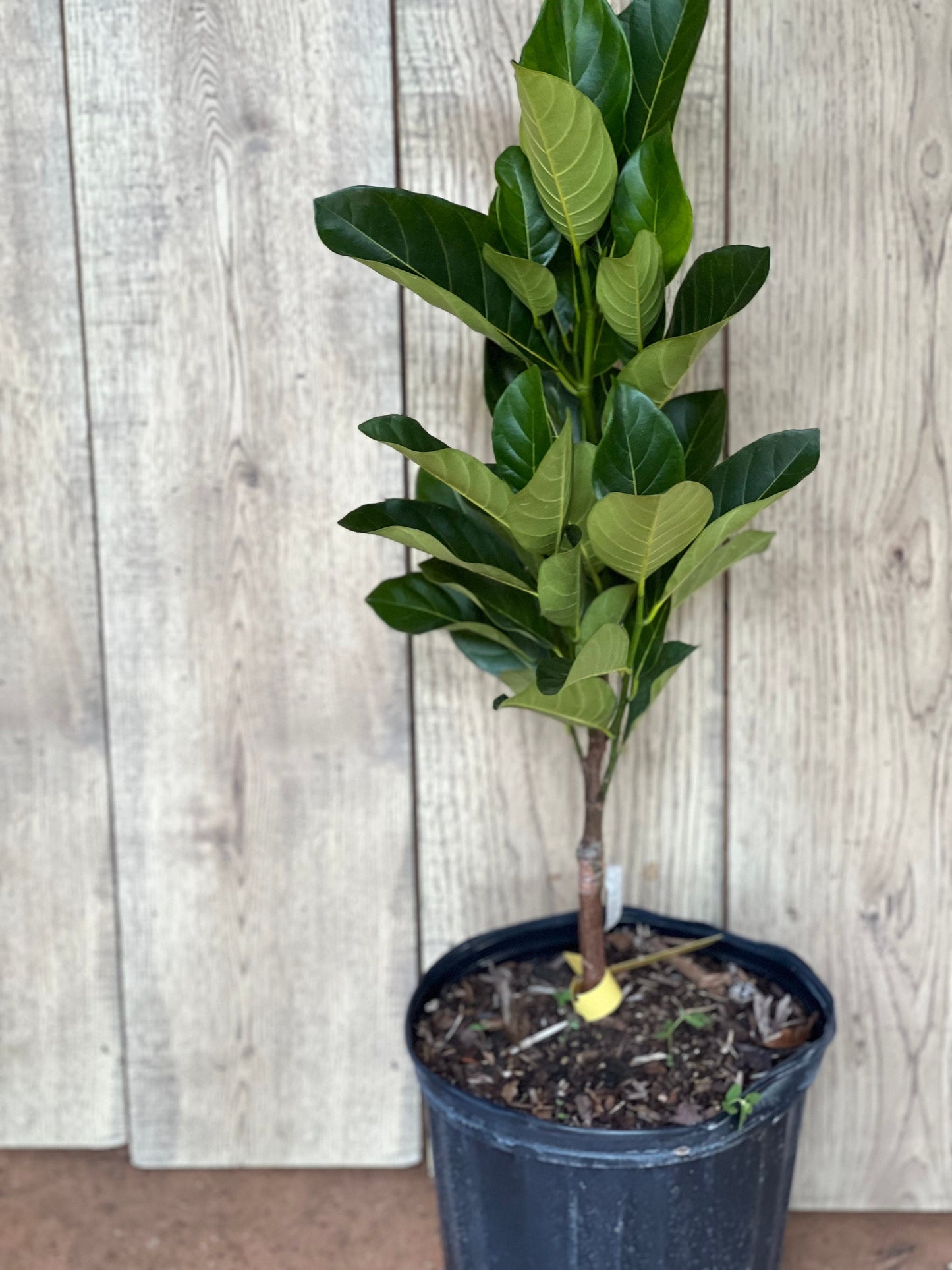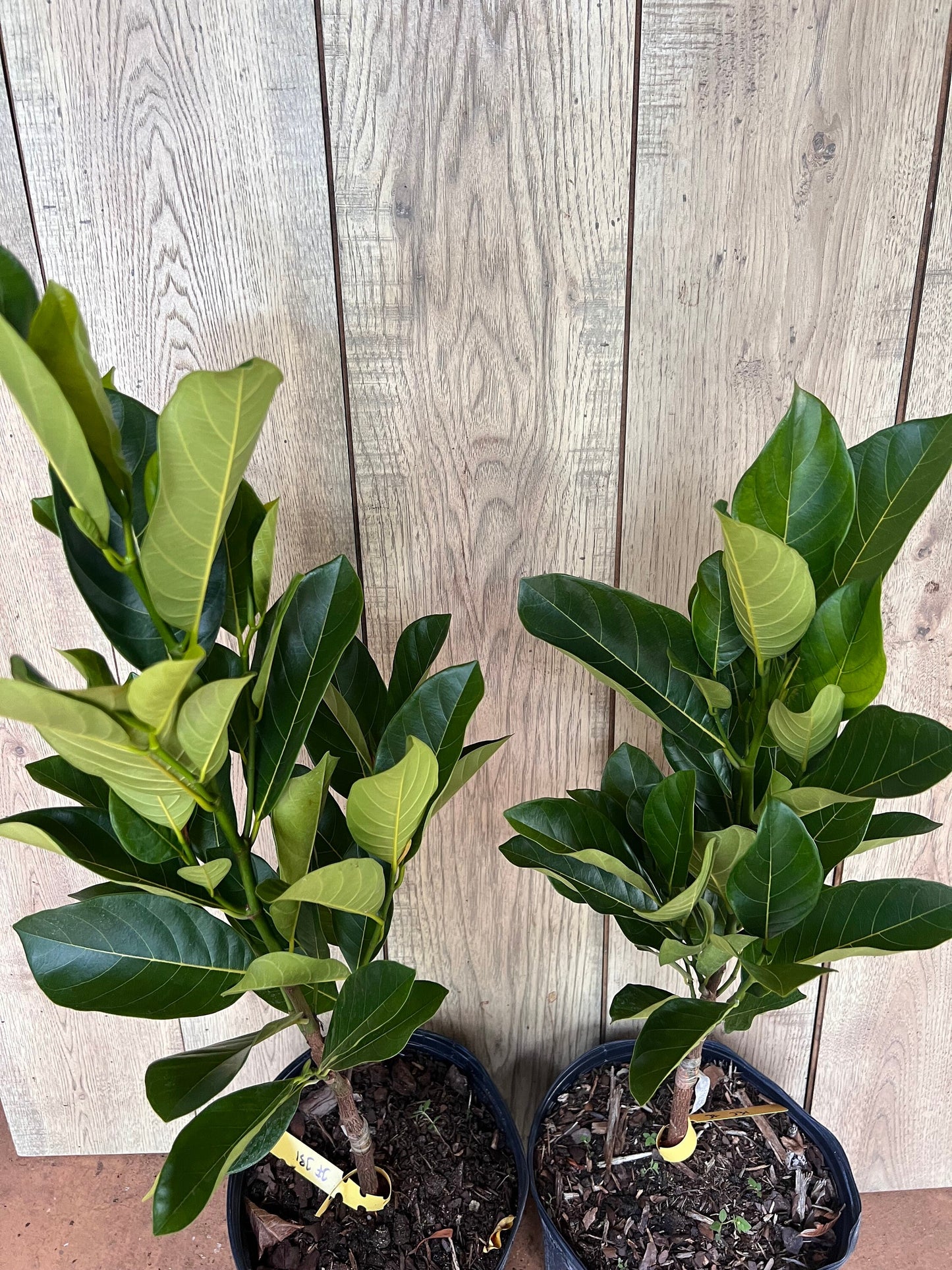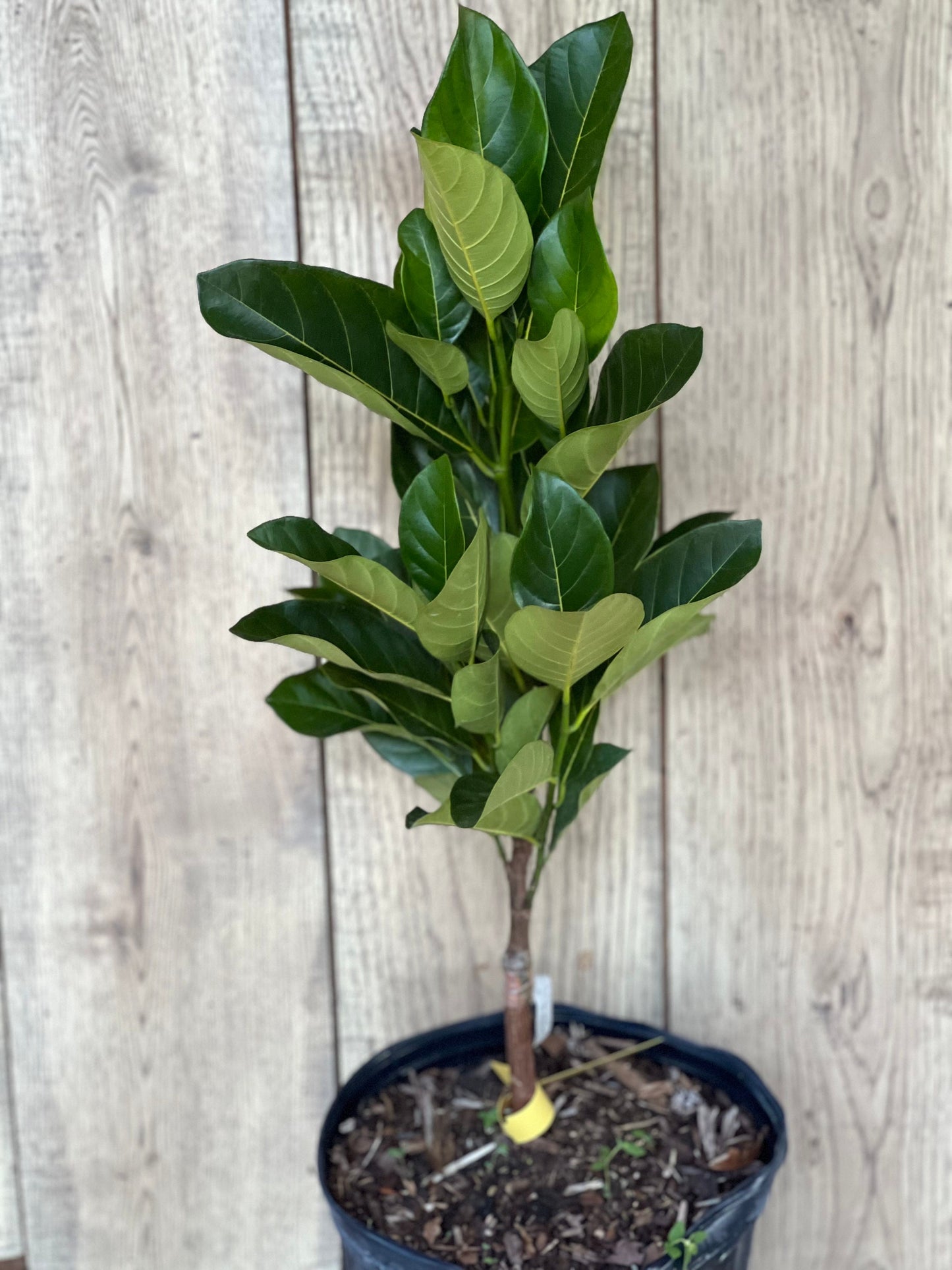1
/
of
9
J31 Jack Fruit, Dwarf in 3 Gallon Pot, Grafted, Artocarpus heterophyllus, no ship to CA and HI
J31 Jack Fruit, Dwarf in 3 Gallon Pot, Grafted, Artocarpus heterophyllus, no ship to CA and HI
Regular price
$77.56 USD
Regular price
$103.42 USD
Sale price
$77.56 USD
Unit price
/
per
Shipping calculated at checkout.
Couldn't load pickup availability
Note: You will receive J31 Jack Fruit Tree in 3 Gallon pot similar to the pictures
J31 Jackfruit is a hybrid variety known for its large, sweet, and aromatic fruit. It is favored for its high yield, early fruiting, and consistent production. The fruit features a thick, yellow, fibrous flesh that is sweet, juicy, and flavorful, often compared to a blend of banana, pineapple, and mango. J31 is prized for its smooth, non-fibrous texture, making it easier to eat and process compared to other varieties. It thrives in tropical and subtropical climates and is ideal for both home gardens and commercial cultivation due to its resilience, disease resistance, and abundant fruiting.
Care Instructions for J31 Jackfruit:
1. Light Requirements
- Full Sun: J31 Jackfruit requires 6-8 hours of direct sunlight daily for optimal growth and fruit production. Plant in a sunny location to encourage vigorous growth.
- Avoid Shade: Ensure the tree is not shaded by other plants, as full sun promotes better fruit yield.
2. Watering
- Consistent Moisture: Jackfruit trees prefer consistent moisture, especially during the growing season. Water deeply when the top 2-3 inches of soil feel dry, but avoid waterlogging.
- Avoid Overwatering: Ensure good soil drainage, as waterlogged soil can lead to root rot. Let the soil dry slightly between waterings.
- Water During Dry Periods: In hot, dry conditions, water the tree more frequently, but be careful not to over-saturate the soil.
3. Soil Requirements
- Well-Draining, Loamy Soil: J31 Jackfruit thrives in fertile, well-draining, loamy soil. The soil should retain moisture without becoming waterlogged.
- pH Range: The ideal soil pH is between 6.0 and 7.5 (slightly acidic to neutral). Amend the soil with organic matter if necessary.
- Avoid Clay Soil: Heavy clay soils that retain water should be amended with sand or organic matter to improve drainage.
4. Temperature and Humidity
- Warm, Tropical Climate: J31 Jackfruit thrives in temperatures between 75°F to 95°F (24°C to 35°C). It is not frost-tolerant, so it should be planted in areas without frost risk.
- Frost Sensitivity: In cooler climates, grow J31 Jackfruit in a greenhouse or container so it can be moved indoors during colder months.
- Humidity: Jackfruit trees prefer moderate to high humidity. In dry climates, misting the tree or using a humidifier can help maintain ideal moisture levels.
5. Fertilizing
- Regular Feeding: During the growing season (spring to early fall), use a balanced, slow-release fertilizer rich in nitrogen, phosphorus, and potassium to support growth and fruiting.
- Organic Fertilizer: Organic compost or well-rotted manure can be used to enrich the soil.
- Reduce Fertilizing in Winter: Reduce or stop fertilizing during cooler months when the tree’s growth slows down.
6. Pruning and Maintenance
- Light Pruning: J31 Jackfruit requires minimal pruning. Remove dead or damaged wood, and thin overcrowded branches to improve airflow and reduce disease risk.
- Tree Size Control: If space is limited, prune the tree to control its size and shape. Trim back leggy or crossing branches to keep the tree compact.
7. Pollination
- Self-Pollinating: J31 Jackfruit is self-pollinating, meaning it does not require another tree to produce fruit. However, having additional trees nearby can improve fruit set.
- Flowering Season: The tree produces small, yellowish flowers on the trunk and branches, typically blooming in late spring to summer. These flowers eventually develop into large fruit.
8. Pests and Diseases
- Common Pests: J31 Jackfruit can attract aphids, mealybugs, scale insects, and caterpillars. Regularly inspect the tree and treat with insecticidal soap or neem oil if needed.
- Fungal Diseases: Overly damp soil conditions can lead to fungal issues like powdery mildew and root rot. Ensure good drainage and avoid overhead watering to minimize fungal risks.
- Mite Infestations: Spider mites can be problematic, especially in dry conditions. Treat with insecticidal soap or use a strong water spray to dislodge them.
9. Harvesting
- Mature Fruit: J31 Jackfruit typically matures 4-5 months after flowering. The fruit is ready to harvest when it becomes yellowish-green and gives off a sweet, fruity aroma.
- Harvesting Method: Use pruning shears or a sharp knife to cut the fruit from the tree, leaving a small portion of the stem attached. Wear gloves to protect your skin from the latex sap.
- Ripening: After harvesting, jackfruit continues to ripen off the tree. Leave it at room temperature to soften, then enjoy fresh or store it in the refrigerator.
10. Toxicity
- Non-Toxic to Pets: J31 Jackfruit is generally safe for pets, though it’s best to avoid letting them consume large amounts, as it may cause stomach upset.
Share
